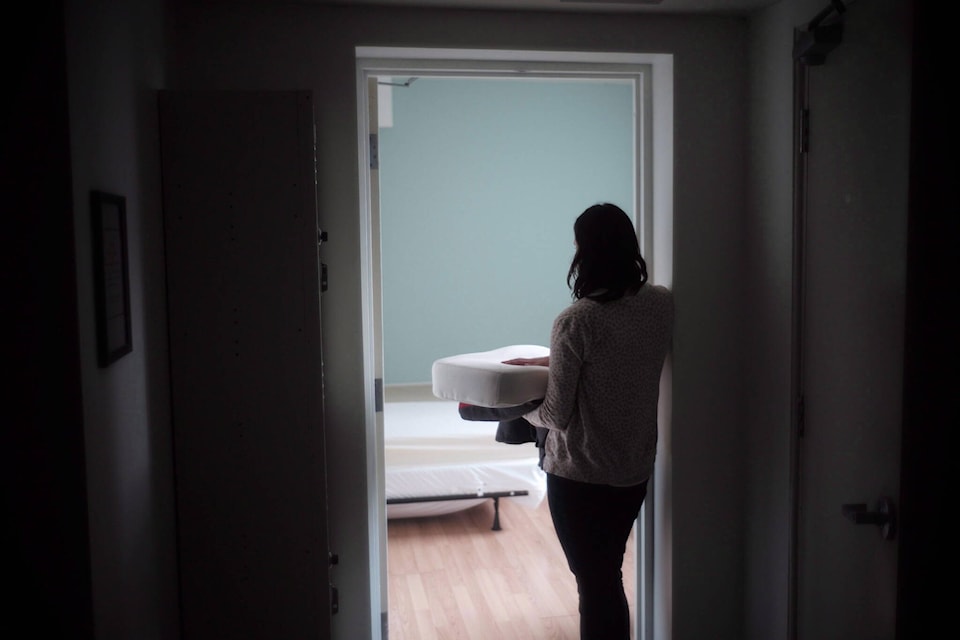Central Alberta women’s shelters saw a 42 per increase in clients staying in their facilities in 2021-22 according to the latest data from Alberta Council of Women’s Shelters.
The 2022 Data Release showed 1,421 clients stayed in emergency or second-stage shelters compared to 1,001 in 2020-21.
Central Alberta Women’s Emergency Shelter in Red Deer saw a 28.5 per cent jump in the number of clients in shelter between April 1 2021 to March 31, 2022. The number of women and children climbed to 446 from 347.
Executive director Danica Hoffart said the demand on shelters has surpassed the pre-pandemic level, and the number of people turned away due to capacity restrictions at the local shelter has doubled.
In 2021-22 there were 1,463 women and children turned away from the 40-bed shelter, up from 732 in 2020-21.
“The high turn away number is deeply concerning,” Hoffart said.
“Shelter directors across the province, and the staff from all of these shelters, are passionate about the work and about serving our clients so we do what we can to meet their needs. But it’s disheartening to know we can never meet all of the needs out in the communities we serve.”
Crisis calls at the local shelter also soared to 2,210 from 1,213.
“We’re talking about a thousand more crisis calls in a year,” Hoffart said.
Related:
Calls to Red Deer’s women’s shelter escalate
Included in the ACWS report was an update on Mountain Rose Centre, the 21-bed shelter in Rocky Mountain House, which opened in September 2019 to replace a 10-bed shelter.
The centre said it thought the increase in beds would meet the community’s needs but was often running at over capacity last year due to a lack of rooms to accommodate families with several children, an increase in gender-based violence, women accessing services with complex needs and staying longer, and lack of affordable housing across the province.
Executive director Cindy Easton said even though the shelter is only funded by the province for 21 beds there is room for 28, and in recent months occupancy has often stretched beyond 21. Just last month, more than 21 beds were filled for 20 days.
“Since we moved in the need has increased substantially, and because our occupancy report says 28 beds, we’ve moved to the 28 beds. If there is a need, we’re going to try and address that need,” Easton said.
She said when there is a shortfall in government funding, the shelter has to rely on local fundraising and donations and is very, very fortunate to have community support.
Even with the increase in beds, there are still times when the shelter has to turn away clients, Easton added.
Related:
Women’s shelters facing staff shortages amid COVID, high rates of gendered violence
Second-stage shelters in central Alberta saw an 83 per cent increase in clients.
Red Deer Outreach Centre, which operates second-stage shelter Julietta’s Place to provide transitional and affordable housing, admitted 26 women 63 children in 2021-22.
Ian Wheeliker, the centre’s executive director, said unlike bigger cities, no one eligible to stay was turned away from Julietta’s. But significant barriers to finding safe and affordable housing continues in Red Deer.
The ACWS report also calls attention to a staffing crisis in the shelter sector. Operational funding from the province has been frozen since 2015. Wheeliker said there’s a lot of catching up to do.
“We want the government to work with us to revise and review the staffing model for shelters. Key positions like prevention and public education and awareness are not funded.”
He said the government is always interested in data, like the information in the ACWS report, but doesn’t fund shelters to collect data, evaluate and generate reports.
“There’s an awful lot of work that goes into releasing the data, and contextualizing the data to tell the story to Albertans. The members of the Alberta council all contribute to this report and it is important information for the public.”
szielinski@reddeeradvocate.com
Like us on Facebook and follow us on Twitter
